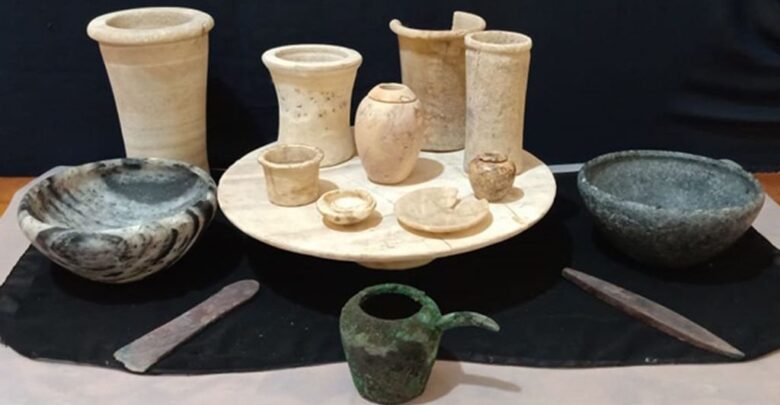

The remains of a large pottery workshop, believed to date back to the Greco-Roman era, has been discovered in Egypt.
The pottery workshop was discovered in the area of Tel Kom Aziza in the Egyptian governorate of Beheira, north of Cairo during an archeology dig.
According to the Secretary-General of the Supreme Council of Antiquities, Mostafa Waziri, the workshop dates back to between the 3rd century B.C. and the first century A.D.
The workshop’s clay wedging and kneading area, the forming area, the drying area and the furnaces have all been unearthed so far.
The wedging and kneading area is where the clay was prepared, kneaded and mixed with additives to increase homogeneity, which would ultimately make the forming process easier.
The forming area of the workshop was used for forming and polishing the pottery. This is the area where archeologists also discovered metal tools, parts of a potter’s wheel, and parts of clay pots.

The drying area is a sun-exposed spot where the premade pots were left to dry in natural sunlight before being taken to the kilns, thermally insulated chambers that produce temperatures sufficient to carry out processes such as hardening.
The head of the Egyptian Antiquities Sector at the Supreme Council of Antiquities, Ayman Ashmawy, said the kilns have upper ventilation holes and are built of red brick surrounded by thick walls of mud bricks to withstand high temperatures during the burning process.
In the kilns, archeologists found gas pipes, discharge pipes to control the temperature inside the ovens and unfinished earthenware pots.

Ibrahim Sobhy, head of the archeological team, said a residential settlement with houses made of mud bricks was also discovered in the area. In the houses, archeologists found pottery for daily use, cooking ovens, storage silos and bronze coins.
In addition to the residential settlement, a group of mud-brick tombs was also found. In some tombs, there were human remains buried in a squatting position, covered with a thick layer of silt and surrounded by funerary vessels made of pottery, alabaster and copper.
Natural gas was accidentally discovered in ancient China while drilling for brines and is believed to have been first used around 500 B.C., possibly as far back as 1,000 B.C.
Sobhy said also the new findings show these burials date back to the era of the beginning of the dynasties. Ancient Egyptians settled that region from the historical eras to the Roman era.
(Edited by Angie Ivan and Fern Siegel)
The post Pot Luck: Ancient Pottery Workshop Unearthed In Astonishing Find appeared first on Zenger News.



